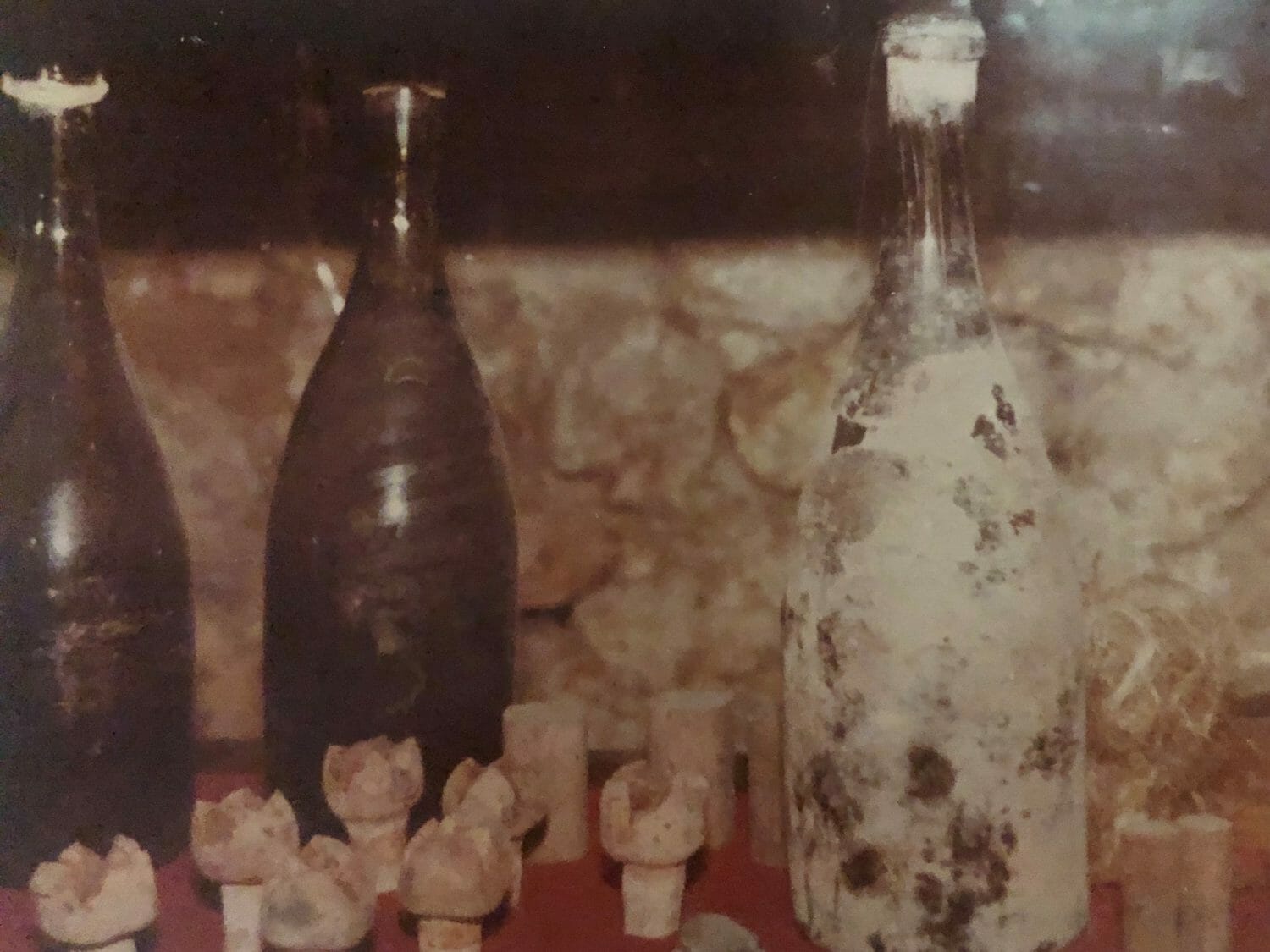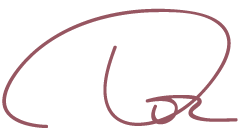Dear Friends,
Time Travel Part Deux: A Changed Man
I rented a loaded 405 Peugeot the next day from an agency near the hotel and launched into morning Paris traffic. The sun was out as I gripped the steering wheel in the roundabouts with two maps on my lap. I was not safe, constantly glancing at the maps and driving. Nor should anyone dare drive near me. I made it to Epernay without incident around midday and found the bustling tourist center at Moet Chandon.
Somehow, someway I found someone who was expecting me. I was quite content to join the regular tour that was leaving the reception area, but I was ushered off to another room. There’s no other way to put what happened during the next 24 hours other than — it just blew me away.
I was introduced to one of the Moet winemakers whose English was better than my French. He gave me a personal, abbreviated tour of the cellars, the largest underground cellar in Champagne with 28 km of tunnels. We did not get lost. We made the usual tourist stops — “Caveau Napoleon” where the Emperor and Jean Remey Moet met in 1814, and where Napoleon left his hat for all to see along with other momentos. But, what really captured my attention was all the wine, still en tirage (in riddling racks/not disgorged), from vintages going back in time. Way back.
“What year were you born,” asked my jovial host as I gazed longingly over the bottles.
“1948.”
“Let’s open one from that year.”
First, he gave me a vivid lesson on how he blended champagne. We tasted a blend with wines from several vintages and vineyards he was working on for Dom Perignon. In these wines, acid is as important as the fruit; the balance was the magic he sought in a finished wine. We spent an hour making a blend, and I was so absorbed in the process I almost forgot about 1948. Not totally convinced I warranted waking up the old wine, he opened it.
I expected a tired but polite wine I could respectfully call interesting, but it was so much more than that — it was memorable. The balance of fruit and acid was still in play as well as a few bubbles to liven it up. I was overwhelmed by his hospitality. Why did I deserve so much of his time along with this rare wine? I was no one, just a working class vintner from Napa.
When we parted, I wished I had a Napa wine to offer my thanks. I quickly learned to bring a few cases of wine from home to give as gifts — which I discovered were much appreciated.
Case in point: In 1994, I ran into the winemaker of Comte de Vogue (great Burgundian producer) at a New York tasting. In 1983 following a tasting at his winery, I gave him a bottle of Napa Zinfandel as a parting gift, thinking it would be a curiosity he might enjoy. A decade later, pouring his wine behind a table he looked up, smiled and said, “Thanks for the Zinfandel. I really enjoyed it.” There is a lesson there. Maybe a few.
As I said good-bye to my Moet host, I invited him to Napa hoping I would get the opportunity to return some of his kindness. I circled back to the tourist center to see what hotel had been arranged. My next appointment was the following evening with Mr. Moussiou for dinner in the Loire Valley.
My childhood was a world with bohemian parents — father a playwright, mother an artist and stage actress. As a family, we never traveled much outside their bookshelves. Summer trips were spent in a station wagon dragging a camper never leaving the western United States. My only trip outside the continental U.S. was Vietnam. There I served in the hospitals where accommodations were sparse. Being here, now, was the adventure of my life.
Later than evening, I was not directed to a hotel, but a stunning Chateau perched on a hill that was part of the original Moet families Residence de Trianon. From 1805 to 1817 Jean-Remey Moet, with the extravagant eye of Jean-Baptise Isaby, built the Residence de Trianon. A complex of gardens, buildings, water features, and grounds boasting over 15,000 plants in bloom during the summer. 600 meters of boxwoods lined the pool near the orangery where I would have lunch the next day amid a room full of celebrities and captains of industry.

My room was part of this architectural wonderland on a hill overlooking the vineyards of Champagne, larger than most homes I had lived in. The bathroom had a huge marbled bathtub — funny how some things you just never forget. Flower arrangements, views, designer furniture, some historic family pieces, and a chilled bottle of Champagne greeted me for the night.
Recently, shuffling through photos I took during that stay in Trianon, they still bring smiles. Me in the marbled bathtub with a glass of Champagne, views out my window, and pictures of my dinner host in a formal dining room with his young daughter.
That evening, I enjoyed the grandest meal I had ever had in my entire young life. It set the bar and became the standard, transporting me into a wormhole I’ve never returned from — hospitality on steroids. I would always be a fan of Moet and Dom Champagne.
The evening began with introductions. I believe there were four other couples, our host, his daughter who was conveniently my age and very attractive, and myself. Our host sabered a magnum of Champagne, and we were off and running for the next three hours. Seven courses built around both rare still wines and the bubbly wines of Champagne, lively conversations, more wines, more small but impeccable dishes that complimented the wines.
The host’s daughter invited me to join her and her friends for some serious mountain climbing near Burgundy where I would finish my trip. She would teach me how to use ropes and pinions, convinced I would love the sport. I declined, but often wondered, what if?
The next day, I was invited to a four course lunch in the very formal Orangery where Napoleon had been entertained, and so many other heads of state since. The view was a reflective 50 meter pool and meters of boxwoods – a visual kaleidoscope of colors and textures; earth, sky and water.. The meal was better than the evening before, staff so generously attentive, guests engaged, all senses heightened. Time stood still in the Orangery, a building that had seen so much history, the tone in the room pitch perfect. I had been invited to a brilliantly choreographed concert that would remain with me forever.
With a long drive from Epernay south to the Loire Valley ahead of me, I left earlier than the others. My evening plan was dinner with the owner of a Chateau we imported wines from. I was satiated, happy, and not concerned I would get lost. As I said my good-bys, a waiter opened up a box and offered me what was inside. I had never had a cigar in my life, and I was clearly in an open minded, free wheeling mood, so I took one of the largest in the box, a Churchill, and some matches. He cut the cigar for me.
As I pulled out of the driveway and spread my maps for the journey, I slowed to look back and take it all in — where I had just been, how much I enjoyed myself, knowing I would never forget this experience. Somehow, I knew it would alter my life in Napa. I would do everything possible to bring this level of hospitality to my wine industry. The French had centuries of practice, and Napa would just be getting started. But, I was convinced we are fast learners.
I lit my big Cuban Montecristo Churchill and drove to the Loire Valley a changed man.
Looking back, France in 1980 brought happiness and a few smiles to me. And as I’ve said before a smile in a hard rain is worth dozens in the sunshine.
Onward.
